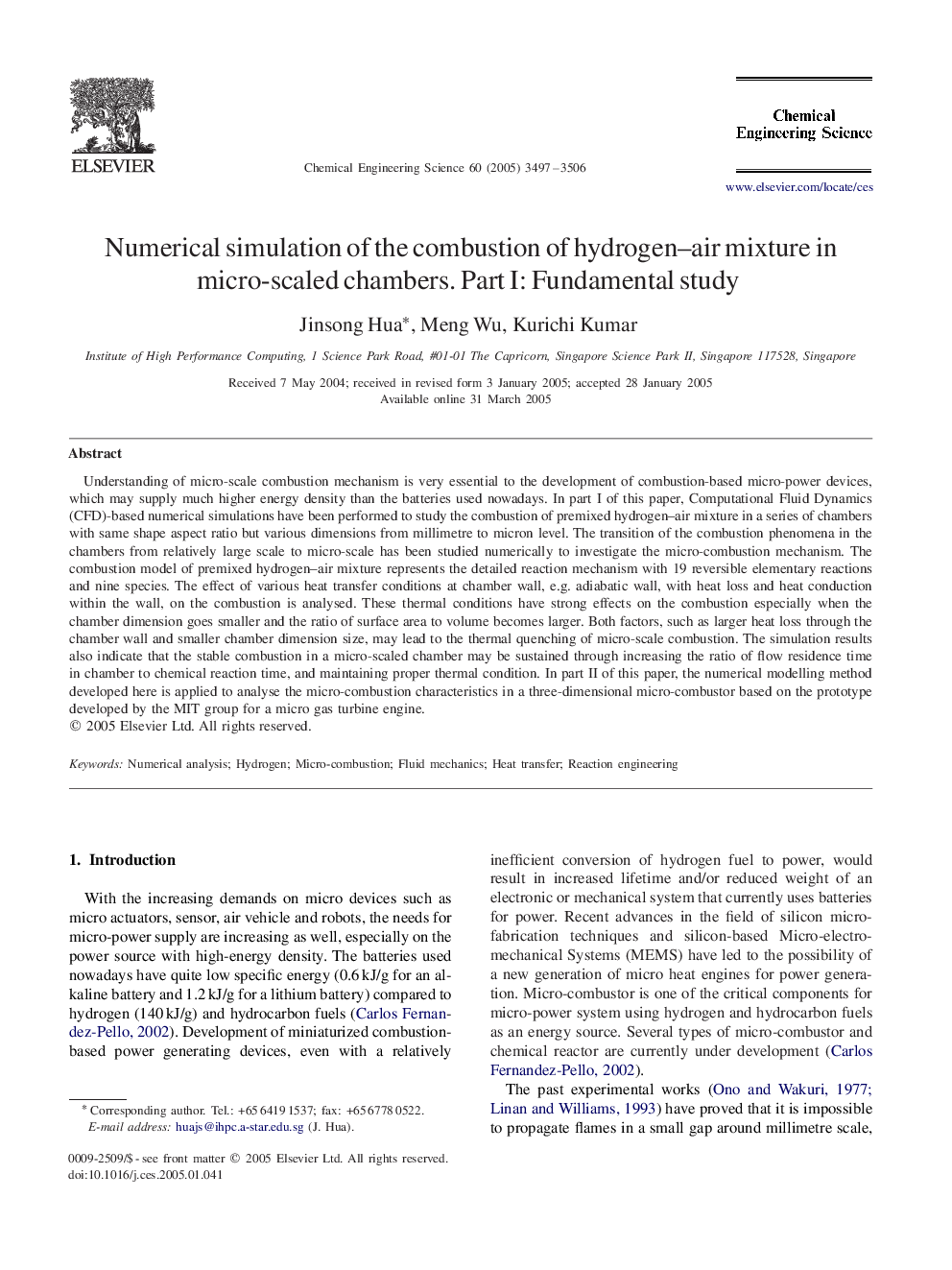| Article ID | Journal | Published Year | Pages | File Type |
|---|---|---|---|---|
| 159754 | Chemical Engineering Science | 2005 | 10 Pages |
Understanding of micro-scale combustion mechanism is very essential to the development of combustion-based micro-power devices, which may supply much higher energy density than the batteries used nowadays. In part I of this paper, Computational Fluid Dynamics (CFD)-based numerical simulations have been performed to study the combustion of premixed hydrogen–air mixture in a series of chambers with same shape aspect ratio but various dimensions from millimetre to micron level. The transition of the combustion phenomena in the chambers from relatively large scale to micro-scale has been studied numerically to investigate the micro-combustion mechanism. The combustion model of premixed hydrogen–air mixture represents the detailed reaction mechanism with 19 reversible elementary reactions and nine species. The effect of various heat transfer conditions at chamber wall, e.g. adiabatic wall, with heat loss and heat conduction within the wall, on the combustion is analysed. These thermal conditions have strong effects on the combustion especially when the chamber dimension goes smaller and the ratio of surface area to volume becomes larger. Both factors, such as larger heat loss through the chamber wall and smaller chamber dimension size, may lead to the thermal quenching of micro-scale combustion. The simulation results also indicate that the stable combustion in a micro-scaled chamber may be sustained through increasing the ratio of flow residence time in chamber to chemical reaction time, and maintaining proper thermal condition. In part II of this paper, the numerical modelling method developed here is applied to analyse the micro-combustion characteristics in a three-dimensional micro-combustor based on the prototype developed by the MIT group for a micro gas turbine engine.
